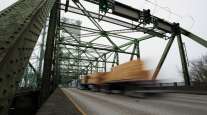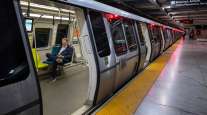Senior Reporter
USDOT Targets Infrastructure Needs in Rural Areas

[Stay on top of transportation news: Get TTNews in your inbox.]
Transportation priorities across rural areas will be the focus of an initiative recently established at the U.S. Department of Transportation, the country’s top transportation officer announced Oct. 8.
For the Rural Opportunities to Use Transportation for Economic Success initiative, or ROUTES, the department plans to analyze funding and financing tools with the potential of enhancing connectivity in rural communities.
Today at @aashtospeaks's Annual Meeting, Secretary Chao announced the Rural Opportunities to Use Transportation for Economic Success (ROUTES) Initiative to support #rural #transportation needs. Read more about the ROUTES Initiative here: https://t.co/zB7M5V7CuS #aashtoAM pic.twitter.com/zw56RLTdrU
— TransportationGov (@USDOT) October 8, 2019
A council at the department led by a senior official will be tasked with reviewing comments from the public and devising a resources handbook, the department noted. Its first meeting will be held in November.
The initiative will consist of input from DOT agencies, such as the Federal Highway Administration, the Federal Transit Administration, the Federal Rail Administration and the Federal Aviation Administration.
“Rural America, which has a disproportionately high rate of fatalities and is historically neglected, needs to have its transportation needs addressed,” Transportation Secretary Elaine Chao said.

Chao
According to DOT, heavy truck operators at times are forced to travel extra distances to access bridges along rural freight corridors. Safety also is a concern. DOT determined nearly half of the country’s highway fatalities occur on rural roadways.
“Rural transportation networks are critically important for domestic production and export of agriculture, mining and energy commodities, as well as the quality of life for all Americans,” according to DOT. “Two-thirds of rail freight originates in rural areas, and nearly half of all truck vehicle-miles-traveled occur on rural roads. These industries require heavy trucks that create significantly more wear-and-tear on roadways.”
DOT established the Infrastructure For Rebuilding America, or INFRA, grants program to facilitate the flow of freight in rural and urban areas.
“It will benefit both rural and urban communities,” Chao said last year. “When you build a better infrastructure, you build a better life.”
The initiative earned praise in the U.S. House of Representatives from the top Republican on the Transportation and Infrastructure Committee.

Graves
“Our farmers, businesses and residents rely on safe, efficient roads, bridges, waterways, rails, small airports and more to connect us to markets throughout the country and the world,” said Rep. Sam Graves (R-Mo.). “Making sure that small and rural communities can compete for federal infrastructure dollars will help maintain our critical national transportation network. This administration continues to demonstrate its strong commitment to rural America.”
“It’s good to see the DOT focusing on infrastructure needs in rural America. I encourage Nebraska’s communities to review these transportation resources,” added Sen. Deb Fischer (R-Neb.), the leader of the Transportation and Safety Subcommittee, which has jurisdiction over freight policy.
Lawmakers who represent large rural areas have advocated for additional funding to improve freight and passenger connectivity.
Sen. John Barrasso (R-Wyo.), chairman of the Environment and Public Works Committee, is one of those policymakers who has consistently highlighted the needs of rural infrastructure.
“It’s important to remember that one size doesn’t fit all,” Barrasso said last year. “We need to work on urban projects and rural projects and do it in a way that is fiscally responsible.”
Last year, the White House’s 10-year, $1.5 trillion infrastructure funding proposal drew pushback from key transportation policymakers from rural states. The plan proposed relying significantly on private-sector backing.
“One of the things President Trump tried to do is leverage more of the federal funds by asking the states and local governments to come up with more of their funds,” Sen. Ben Cardin (D-Md.), a member of the highway panel, said at a hearing last year. “I’m one who believes, as I think the majority of this committee believes, we should be having a more robust federal infrastructure program with federal funds.”
Want more news? Listen to today's daily briefing:




